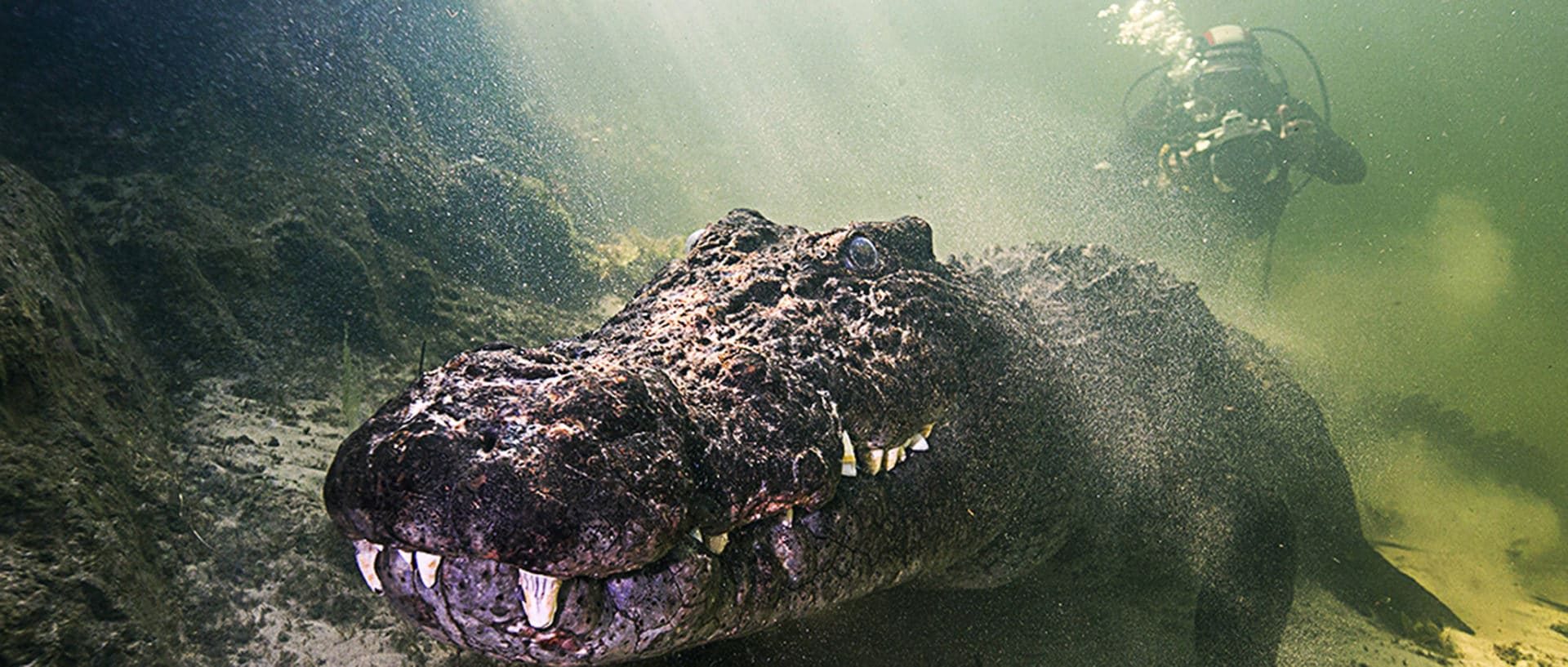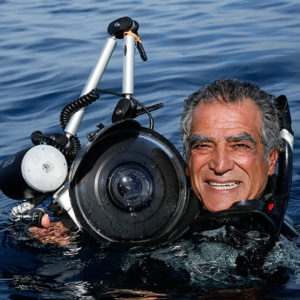The current is often very strong and just like the crocodile does, we drift with the current and do not fight against it. We might need to dig into the sand bed with a hand or brace against the bottom with our knees just to try to stay in place. This can make an already difficult search even harder, all part of the adventure. The crocodile’s body color and shape blends with the river’s dark soil, especially near trees and papyrus reeds, making them challenging to locate. We move cautiously and quietly as we search.
We look for a line of jagged white teeth, since it is the most easily distinguishing characteristic of a croc as they hide in the shadows of the riverbank. They usually remain completely motionless, perfectly camouflaged in their environment with the exception of those gleaming, white teeth. Then we see them, but they probably don’t see us. With thick nictitating membranes drawn over their eyes for protection, their vision underwater is limited and they won’t notice our slow and stealthy approach.
The team leader carefully approaches with the guest remaining behind with the safety diver. When the “safe to approach” signal is given, the guest (perfect buoyancy is required for this adventure) moves side by side with the safety diver to a distance of no less than 12 inches. While they are not known to be aggressive underwater, it is wise to at least allow this minimum amount of space between their mouth and your port. in addition to boasting the most powerful jaws in the animal kingdom, crocodiles have sensors in their lower jaw that help them interpret spatial relationships to objects to compensate for their poor underwater vision; invading their but the moment a crocodile spots our boat, they dive seeking security in the water.


